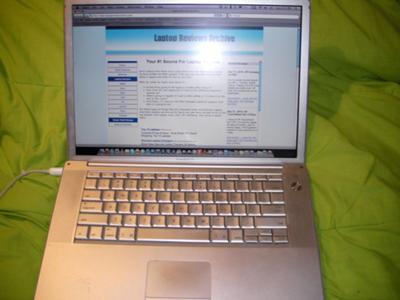

- #Aluminum powerbook g4 specs serial
- #Aluminum powerbook g4 specs update
- #Aluminum powerbook g4 specs upgrade
- #Aluminum powerbook g4 specs portable
The one I had ran for just under four hours, with the processor speed set to "highest," the screen brightness turned all the way up and several applications running, including iTunes, Safari, Konfabulator and Mail. But the iBook lasts longer on battery power. The PowerBook is faster, of course, as shown by its Xbench score of 117, compared with the iBook's score of 101. There's also a midrange iBook, which comes with that same 1-GHz processor but is otherwise essentially the same as the entry-level model - except that it also has a 14-in. (Of course, you can't get that model with a SuperDrive, so if you plan on making DVDs on the go, that one's out.) The price difference between them is $500, enough to buy 1GB of RAM, an iSight webcam and even an inexpensive laptop case. PowerBook and the base model iBook, which has the same LCD screen, a slightly slower 1-GHz processor and a smaller 30GB hard drive. Of course a better Apples-to-Apples comparison would be between the 12-in.
#Aluminum powerbook g4 specs portable
For all but the most processor-intensive tasks, it's up to the job, and with the optional SuperDrive, you can get into portable digital editing and DVD creation for a few hundred dollars less than before. This is the first iBook I've spent serious time with since the early G3 models of 2002, and the improvements since then make it a fantastic deal for buyers on a budget - especially now that it sports a G4 chip. And if you have one of those first-generation hotties, now is a good time to trade up if you like the size. It delivers fluid operation for most tasks, runs silently and doesn't get nearly as hot as its predecessors.
#Aluminum powerbook g4 specs update
Each incremental update improved on an already solid product, and the latest baby PowerBook is the best yet. PowerBooks, starting with the almost-too-hot-to-handle 867-MHz model from early 2003, the much-improved 1-GHz model released last fall and the 1.33-GHz model released last month. I've had a chance to use all three of Apple's 12-in. The iBook, with a 32MB ATI Mobility Radeon 9200 card, still offers only VGA for external monitor hookups. And the larger iBook can be ordered with an optional SuperDrive for an extra $200.Ĭontinuing with the specifications, the PowerBook comes with a 64MB Nvidia GeForce FX Go5200 video card that allows you to easily hook it up via Digital Video Interface to an external monitor.
#Aluminum powerbook g4 specs serial
Both offer FireWire 400 ports and Universal Serial Bus 2.0 ports for peripherals. (The going price for a 512MB chip on the market is about $120, and I bumped the RAM in the the two laptops I tested to a healthy 768MB.) Both have 512KB of L2 cache memory. Both come with 256MB of memory, which you'll want to double or triple before doing any serious computing. PowerBook checks in at $1,599, or just $101 more than the iBook with AirPort. When ordered with a combo drive, that same 12-in. The PowerBook is $1,799, with the difference in price largely due to the SuperDrive. In fact, all PowerBooks now come with AirPort Extreme cards installed, one of the nice upgrades introduced into the PowerBook line by Apple last month. screen - and it has the AirPort card included. The entry-level PowerBook comes with a slightly faster 1.33-GHz G4 chip, a 60GB hard drive, a fairly bright, but sharp 12-in. LCD screen and a 60GB hard drive, and it can be ordered with an AirPort card. The top-end iBook now sports a 1.2-GHz G4 chip, a bright and easy-to-read 14-in.
#Aluminum powerbook g4 specs upgrade
The upper end of Apple's iBook line has been edging ever closer to PowerBook territory over the past few upgrade cycles, and that's certainly the case with the latest iteration of white wonders. The PowerBook weighs just 4.6 pounds, while the iBook weighs 5.9 pounds. PowerBook, similarly equipped - but with a SuperDrive that can burn DVDs as well as CDs. iBook G4, with a combination drive and an AirPort Extreme card for wireless networking, and an entry-level 12-in. Apple recently sent Computerworld two of its newest laptops for review purposes: a top-end 14-in.


 0 kommentar(er)
0 kommentar(er)
